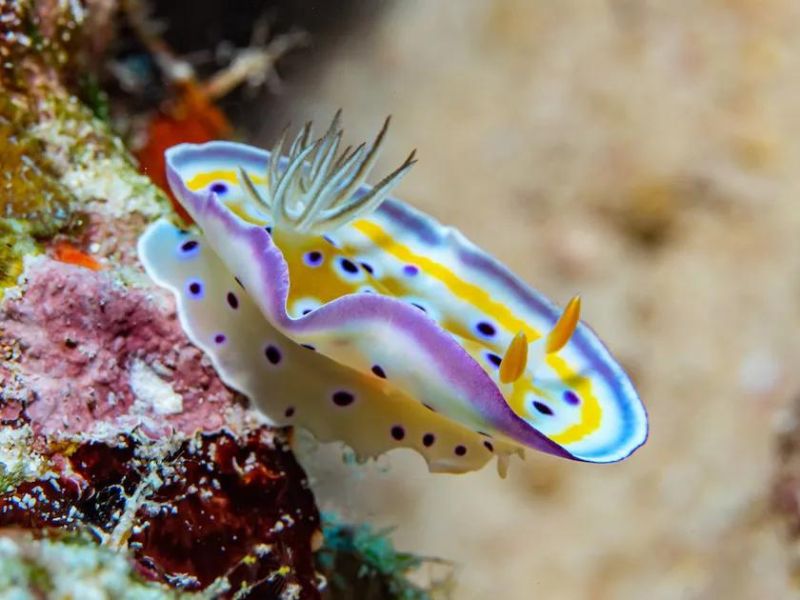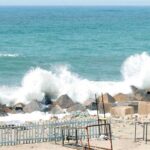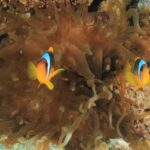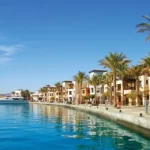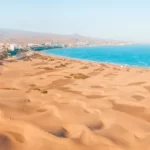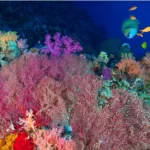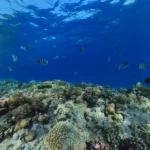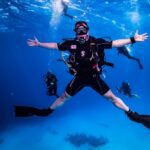Nudibranchs, These wide and diverse groups, and not necessarily of the same genus, species or family, but because they all look vaguely similar, i have but together all of the various sub-species and family groups under one heading. In essence, the word “Nudibranch” means ‘naked gills’ these are snails that have lost their shells and heir respiratory gills (which surround the anus) are usually very obviously placed at the rear. They have a pair of sensory feelers or rhinophores at the front and a pair of eyes somewhere in the same region. they eat with the aid of rasping platelets or radula in a large mouth. All of the Nudibranchs listed here were photographed in the Red Sea, though a few, we have since discovered, have never been officially recorded from the region.
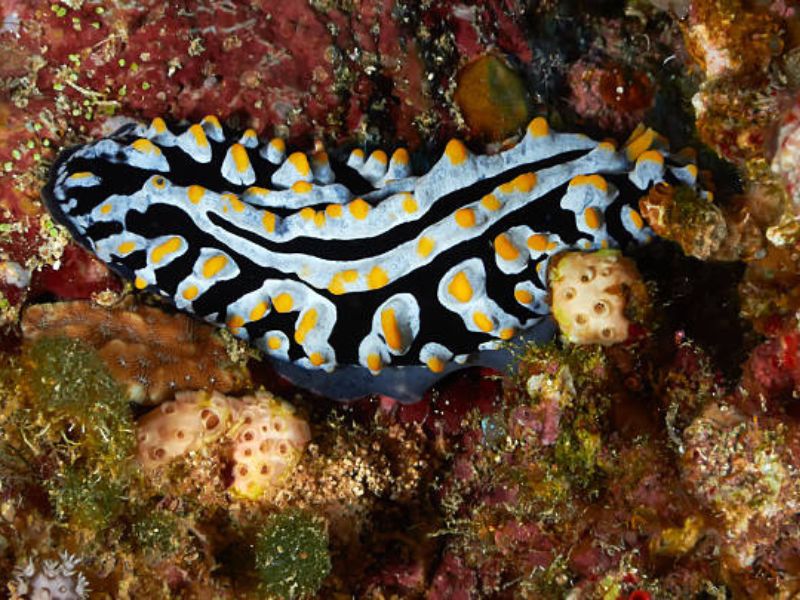
pustulose wart slug
Size: 6 cm (2.5in)
Overall more greyish brown in color with paler grey nodules over all the body. Slimmer and more elongated than others of the species.
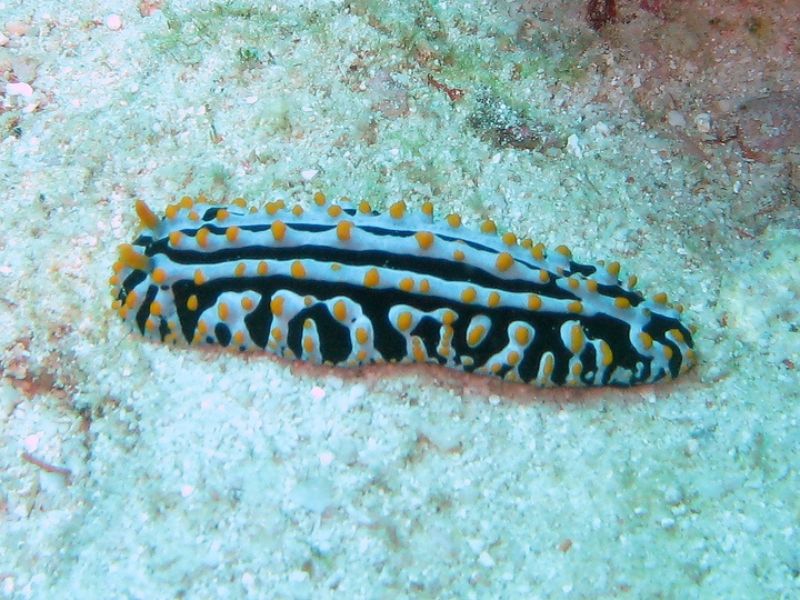
varicose wart slug
Size: 7cm (2.3in)
typically dark greyish blue with black lines between its warts that are sometimes tipped in yellow.
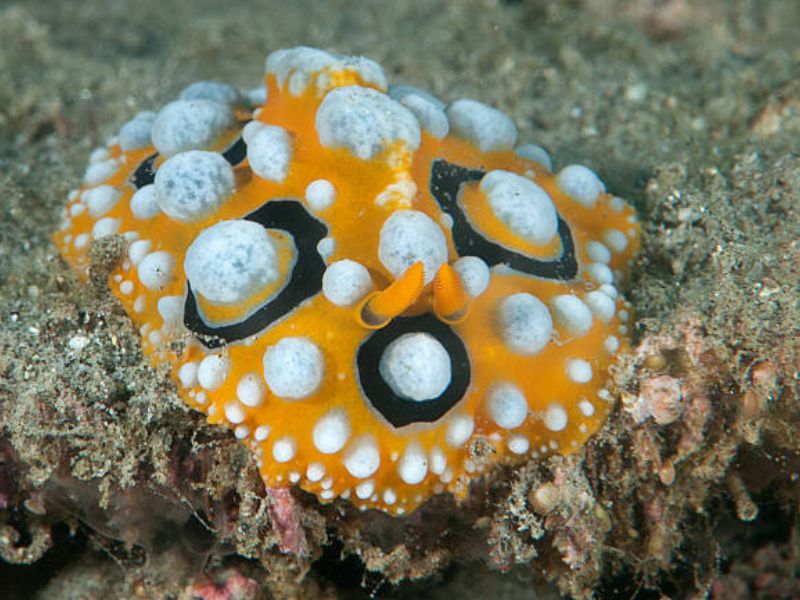
Eyespot wart slug
Size: 6 cm (2.5in)
Beautiful little wart slug, overall orange in color with black and light blue markings between the nodules. Quite conical in shape.
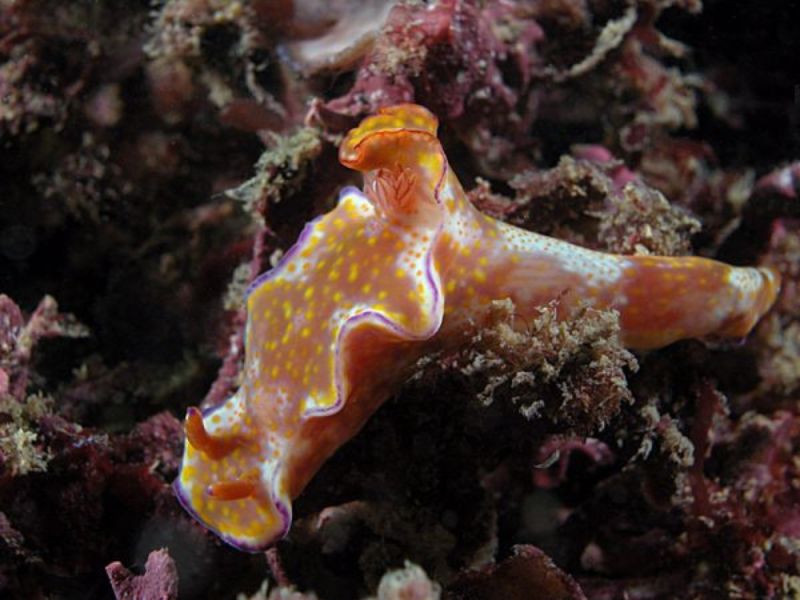
Purple-edged ceratosoma
Size: 11cm (4.3in)
Sometimes called the long-tailed Ceratosoma, quite a robust specimen with a wide mantle, long rhinophores, and gills just at the juncture of the tail. The Red Sea population has a purple edge to its fringe.
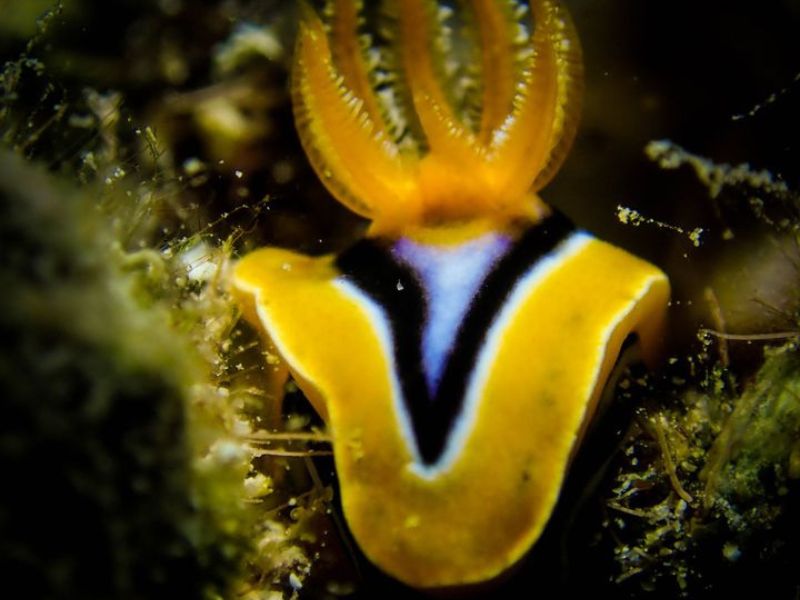
Pyjama Nudibranch
Size: up to 4 cm (1.5in)
A very distinctively colored nudibranch, usually seen on most divers where it feeds on red sponges and algae-covered, dead coral, has a yellow margin with black and blue longitudinal strips and bright orangey yellow gills and rhinophores.
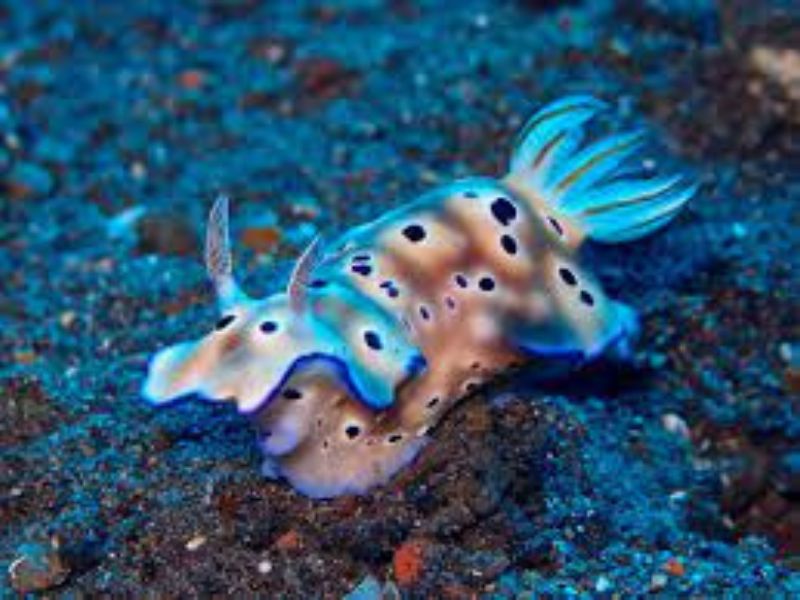
cute Resbecia
Size: 11cm (4.3in)
Large nudibranchs, almost always crawling around in pairs, seemingly attached nose to tail. feeds on mucus and crustose algae.
